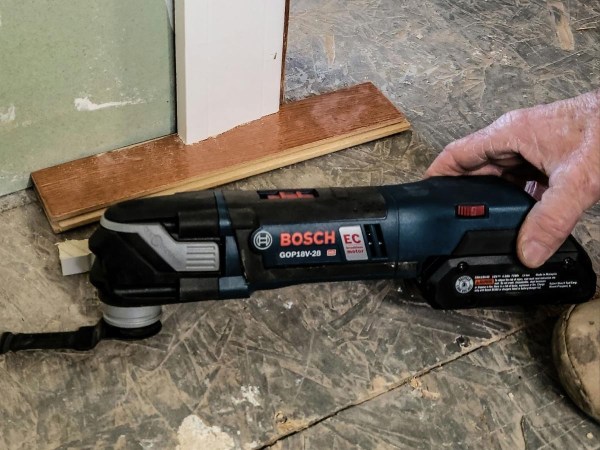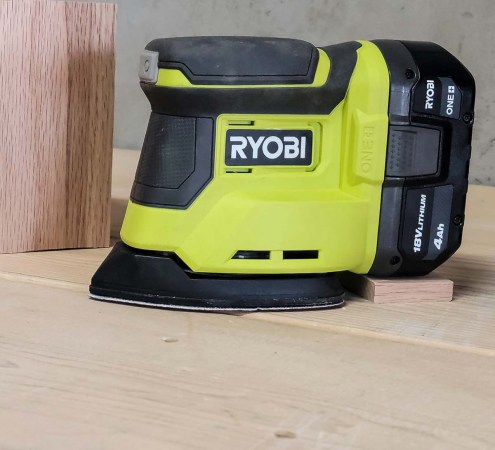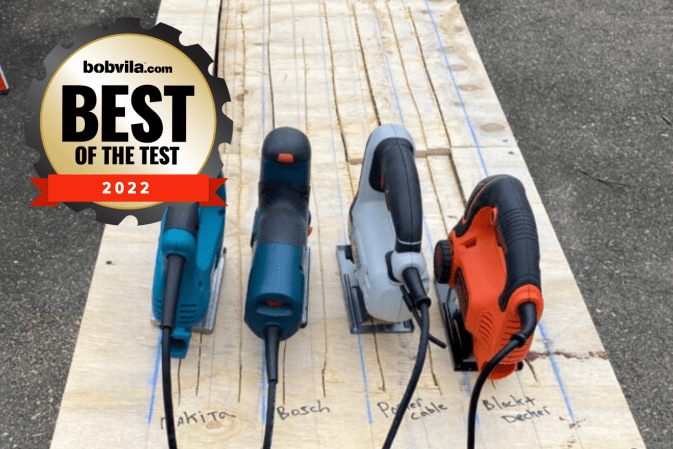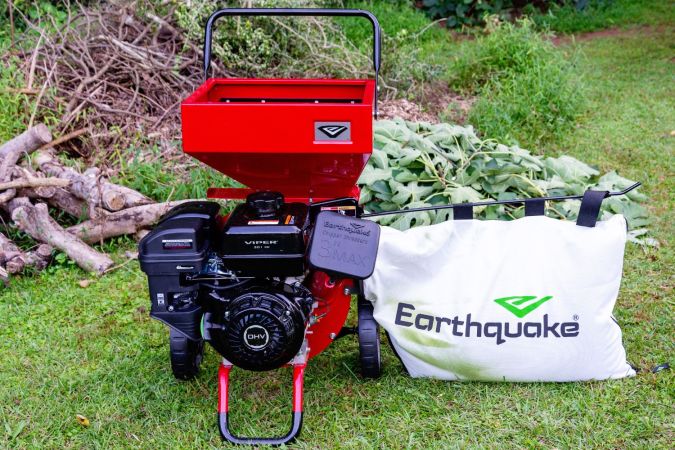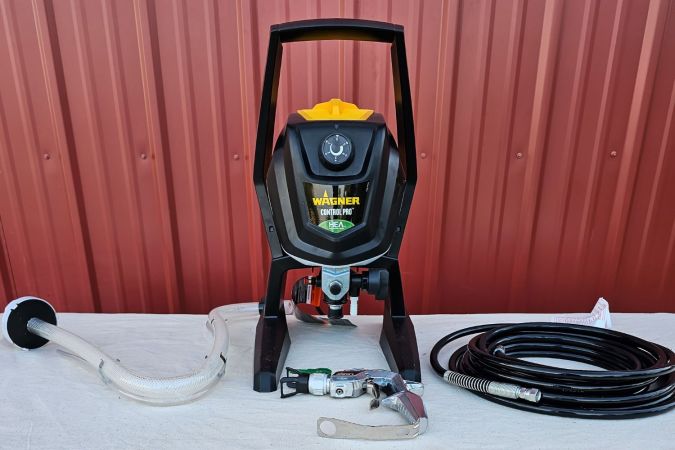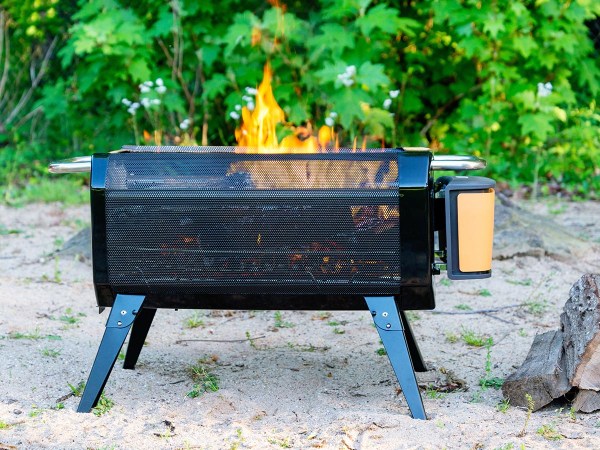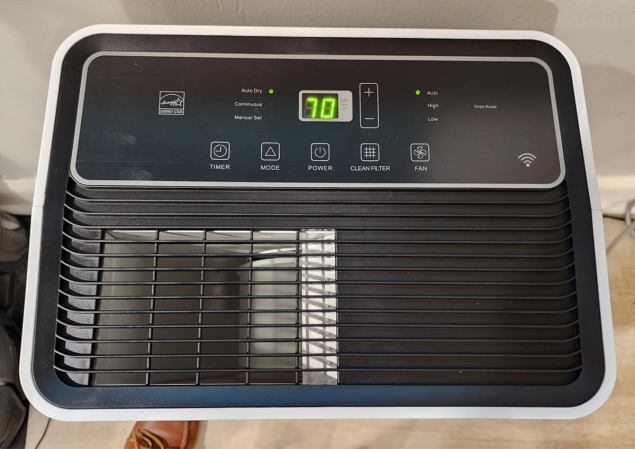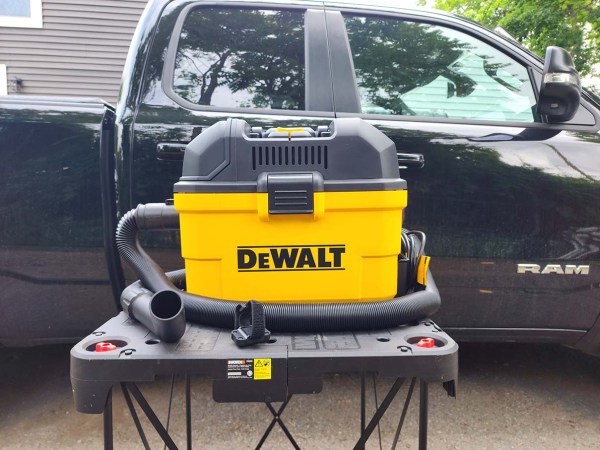We may earn revenue from the products available on this page and participate in affiliate programs. Learn More ›
Drywall sanding can be unpleasant work. It takes a long time, and the fine dust it creates manages to coat everything in a thin film, including your eyes, ears, nose, and airways. Enter the Wen DW5084 variable-speed drywall sander, which makes drywall sanding a much more enjoyable experience by reducing the time it takes and the mess it creates.
This drywall sander can quickly sand drywall joints on walls, ceilings, and even corners to a smooth, even finish. And it does so while collecting the dust it produces rather than letting it disperse into the air. But is it worth investing in? This Wen drywall sander review answers that question and many more. Keep reading to learn more about this handy tool.
Wen DW5084 5-Amp 2-in-1 Variable-Speed Drywall Sander: At a Glance
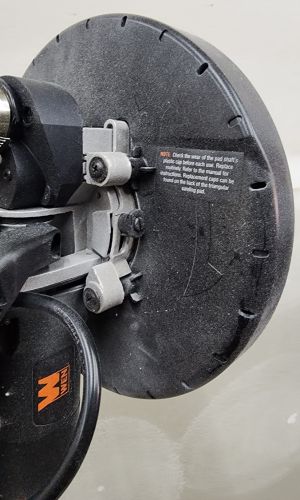
Rating: 8.3/10
SPECS
- Speed: 600 to 1500 revolutions per minute (rpm)
- Reach: 5 feet
- Weight: 17.4 pounds
PROS
- Compatible with 2 easy-to-swap heads for sanding in different areas
- Dust collection works well and keeps messes to a minimum
- Telescoping handle folds for compact storage but feels sturdy when in use
- Adjustable shoulder strap makes sanding ceilings a bit easier on the shoulders and arms
CONS
- No dust bag; users need a wet/dry vac to collect dust
Get the Wen drywall sander at:
- Amazon for $133.99 (with 2 heads)
- Lowe’s for $130.70 (with 1 head)
- The Home Depot for $130.05 (with 1 head)
What is the Wen variable-speed drywall sander?
The Wen drywall sander is a handheld power tool designed to make sanding drywall compound easier, faster, and less messy. This tool features a 5-amp motor that spins an 8.5-inch head at speeds between 600 and 1500 rpm. It’s also compatible with an 11.25-inch triangular head that oscillates to sand corners. Both heads feature a hook-and-loop design that clings to sandpaper discs. The unit’s motor sits on the end of a telescoping pole that provides 5 feet of reach and features an adjustable shoulder strap.
The Wen variable-speed drywall sander also features automatic dust collection. It has a small fan attached to the motor that creates suction and allows the drywall sanding dust to travel through the handle and down to a 15-foot hose, which connects to a standard wet/dry vacuum.
The kit also includes six round sandpaper discs and six triangular pieces, with both sets ranging from 60 to 240 grit.
How easy is the Wen variable-speed drywall sander to set up?
When testing the best drywall sanders, the Wen was one of the first I set up, and it sort of spoiled me. It comes with the folding handle disconnected and folded out of the box, but all it takes to set it up is to swing the head forward to connect the two hinged sections of the handle and secure the clip. After that, the extension handle simply slides into the bottom of the pole and clamps down with a screw-down fitting. At that point, you can extend up to 60 inches for extra reach.
Connecting the hose was also straightforward. One end of the 15-foot hose snaps into the bottom of the handle. The other end connects to a wet/dry vac, which is not included with purchase.
This drywall sander features swappable heads: one is a round, spinning head, and the other is a triangular, oscillating head. Swapping between these two heads is easy. Simply unlock the toolless lever and slide it down to release the head from the motor mount. Install the other and slide the lever back in place to lock it. It’s very easy.
Maybe the trickiest thing about setting up the Wen drywall sander is attaching the round sanding disc so its holes line up with the holes on the pad. Getting this right is important because that’s where the suction for the dust extraction comes from, so it’s worth taking a minute to ensure it’s aligned.
Is the Wen variable-speed drywall sander easy to use?
It’s important to understand that all motorized drywall sanders have some heft and can be unwieldy. However, the Wen’s body (without the head attached) weighs about 9 pounds, which makes it one of the lighter models, and that makes it relatively easy to use.
The on/off switch locks into the on position during use, which allowed me to let go of the switch without disrupting my work. Also, the speed dial is easy to use and manipulate, and speed adjustments can be made without stopping the sander. I found that it was important to watch the sander’s speed, or it could take off more compound than I intended, but this is true with all of the drywall sanders.
However, what really makes the Wen variable-speed drywall sander easy to use is the adjustable shoulder strap. Rather than carrying all of the weight in my hands, arms, and shoulders, I could wear the shoulder strap and distribute the weight across my core. The strap helps when sanding the walls, but it really helps when sanding ceiling seams. However, the pole’s 5-foot reach meant I couldn’t wear the shoulder strap when working on tall ceilings.
The head swivels easily, allowing the surface of the sandpaper to sit flat on the drywall, making it easy to maneuver. This helps it sand smoothly and conform to the contours of the wall.
Is the Wen variable-speed drywall sander well designed?
In my opinion, this drywall sander by Wen, a company headquartered in Illinois that’s been making tools since 1951, is well designed for three specific reasons:
- The folding design is convenient for storage or transport but also sturdy during use.
- The adjustable shoulder strap makes it easier to work with than other drywall sanders.
- The swappable heads allow you to sand compound joints and corners and can be changed without tools.
Between these three features, the Wen drywall sander was leagues ahead of the other models in my test. Only one other model had a folding handle, and none of them had a shoulder strap or swappable heads. In fact, none of the other power sanders could fit into corners. These features make the sander convenient and easy to use but also allow for some versatility.
Also, the Wen is as ergonomically designed as possible for a pole with a motor on its very end. It has nonslip grips and a relatively balanced design. Since there are times when using the shoulder strap isn’t feasible, these comfort-rich features are important.

How did the Wen variable-speed drywall sander perform?
The Wen drywall sander performed very well in testing. It has plenty of power and speed, and to be quite honest, I kept it toward the middle of the speed settings (around 1000 rpm, but there aren’t speed markings to say for sure), which allowed me to sand the joint without losing control and sanding more than I planned.
It also did a great job collecting drywall compound, and attaching it to my wet/dry vacuum also helped. The collection hose is long and flexible, allowing me to sand freely with the vacuum sitting toward the middle of the room without stepping on either. Very little dust collected on the ground at the base of the walls and around the room compared to a regular pole sander or sanding block.
But herein lies the one issue I have with the Wen: While it does have its own automatic dust-collection fan, it doesn’t come with a dust-collection bag. You’ll have to own or purchase a wet/dry vacuum to avoid a mess.
Is the Wen variable-speed drywall sander worth the money?
Yes, the Wen drywall sander is worth the money. I’ve used many Wen products in the past, and they’re either an unbelievable combination of value and quality or total pieces of junk. The drywall sander is the former. There wasn’t a single question of build quality or puzzling design to deal with. It felt like a high-quality tool with decent balance, a smart design, and a comfortable grip.
And considering that it comes with a second head that easily swaps on to reach into corners, it’s certainly worth the money. Corners can be extremely awkward to sand, and this tool makes the process very easy and relatively painless. Also, the hose and sandpaper are good quality as well. This is one of those Wen products that’s definitely worth the money.
Is the Wen variable-speed drywall sander right for you?
Typically, when I review a product, I think about the types of customers who are ideal for the product. Equally as important, I consider who might not be a good fit. In this case, it was harder to imagine who shouldn’t give the Wen a try than who should. The deciding factor came down to the intended frequency of use.
If you’re only sanding one project, such as a drywall repair, a new wall, or something of that sort, don’t buy the Wen. It will make short work of the project, yes, but a sanding pole can take care of it for around $20 (albeit with quite a bit more effort). I’d suggest the Marshalltown 3.25-Inch by 9.25-Inch Pole Sander—just be prepared to clean up afterward.
However, if you have a large project such as a renovation, addition, or several small jobs like the ones described previously, I believe it’s worth it. The speed at which the Wen sands and the minimal mess it creates make the Wen incredibly convenient. Yes, it’s heavier than a sanding pole, but it’s also much, much faster. Compared to the other motorized drywall sanders in the test, it’s just a better-quality tool—making it a great choice for just about anyone sanding drywall.
Where to Buy the Wen Variable-Speed Drywall Sander
Get the Wen drywall sander at:
- Amazon for $133.99(with 2 heads)
- Lowe’s for $130.70 (with 1 head)
- The Home Depot for $130.05 (with 1 head)
Meet the Tester
Tom Scalisi is a full-time DIY and construction writer for many of the largest websites in the industry, including BobVila.com, This Old House, Family Handyman, and Forbes. He spent years working in the trades and industrial maintenance, undertaking more drywall projects than he can count.


